2020 Hennessey Ranger VelociRaptor Roars Through the Desert
Matt Farah tests the Hennessey Ranger VelociRaptor on SoCal trails and gives it a thorough–and honest– evaluation.
Americans love Ford trucks. Not all of them, but enough of them to make the F-Series a perennial hit vehicle. And ever since it’s been available, the F-150 Raptor has been an enthusiast favorite. Over the past several years, there’s been a resurgence in the popularity of midsize trucks. The Toyota Tacoma and Nissan Frontier have to do battle with the Chevrolet Colorado, GMC Canyon, and now the 2019 Ford Ranger. So a Ranger Raptor is a no-brainer, right? Wrong. It’s available in other parts of the world, but not here in the states. Luckily, Hennessey Performance (HPE) offers a truck it calls the Ranger VelociRaptor.
As its name implies, it’s not an official Raptor, but just like Ford’s ferocious F-150, it has a lot of aggression that’s meant to be taken out on desolate trails at high speeds. That’s exactly what Matt Farah of The Smoking Tire does through Gorman, California’s Hungry Valley State Vehicular Recreation Area (SVRA) in this video as Vinny Russo, a public relations representative for HPE, rides shotgun.
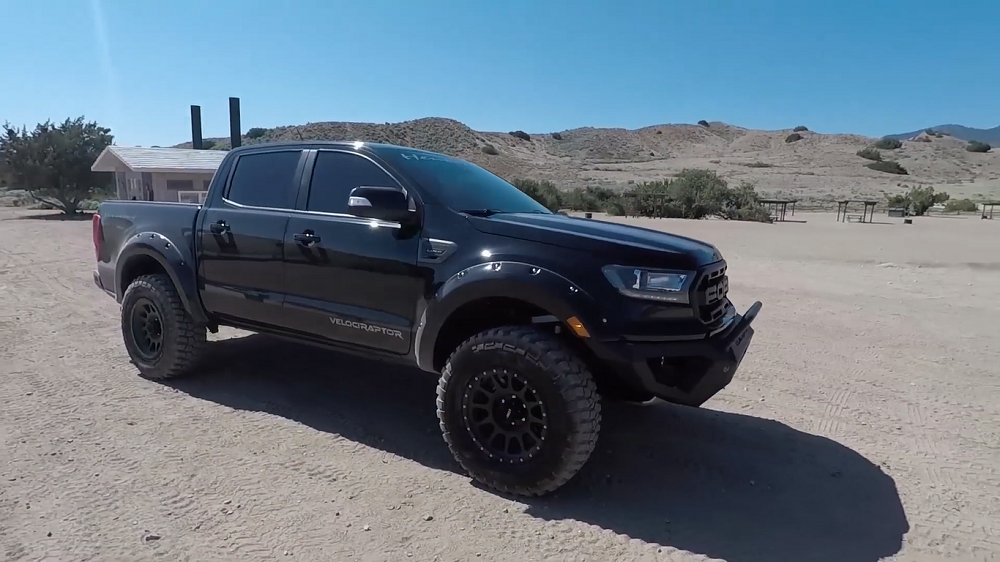
Farah’s test truck started life as a $45,000 2020 Ranger FX4. To transform it into a VelociRaptor, HPE installed new front and rear bumpers, a RAPTOR grille insert, and special badges.
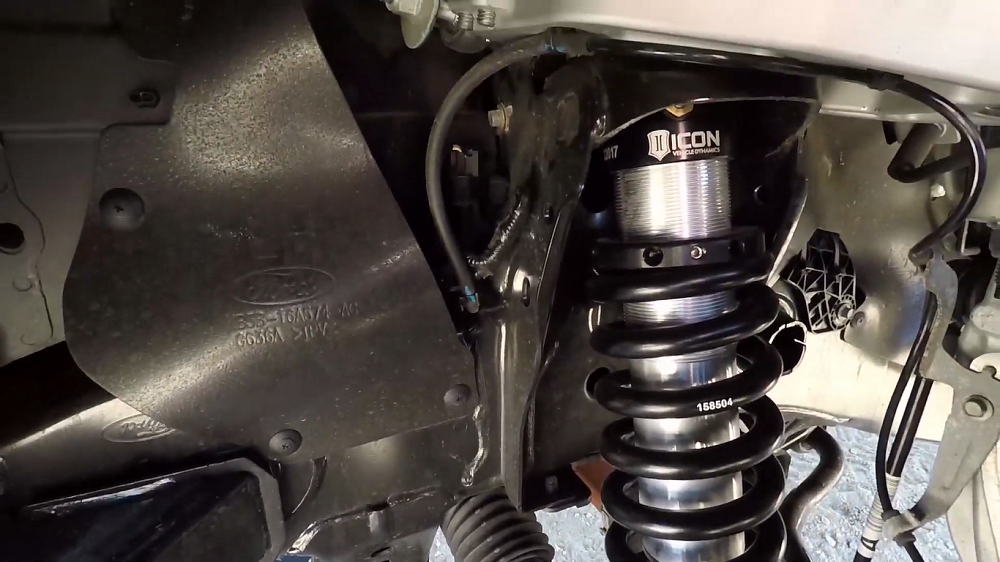
Off-road performance hardware includes Icon coilovers and a set of 18-inch wheels wrapped in BF Goodrich KM2 mud tires.
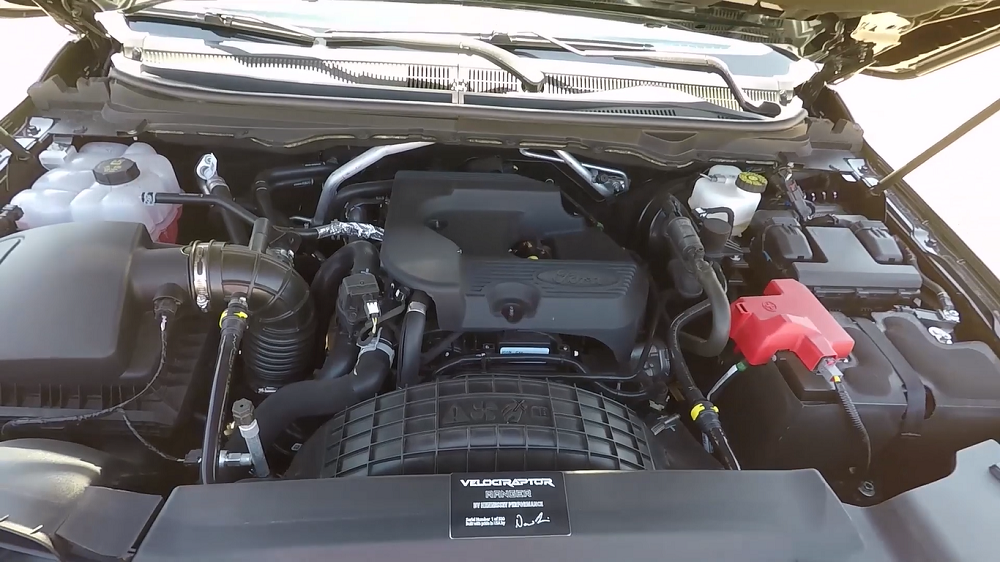
The VelociRaptor’s 2.3-liter EcoBoost I4 is enhanced by an engine management software upgrade and breathes through a performance exhaust system. Altogether, those changes bring the VelociRaptor’s final price to roughly $65,000.
HPE’s engine tweaks boost output to 360 horsepower and 440 lb-ft of torque. The 0-60 mph time drops from 7.4 to 4.9 seconds; the quarter mile time goes from 15.2 seconds at 91 mph to 13.9 seconds at 101 mph. Farah sums the build up by saying, “Sixty-five thousand dollars gets you a Ranger that does Raptor things, looks Raptor-ish, and is as fast as a stock Raptor.”
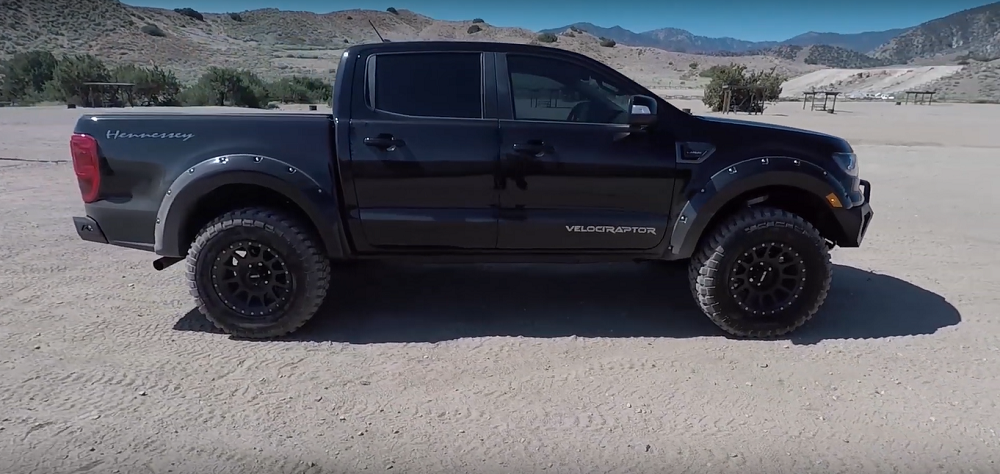
The rough trails are full of bumps, which shake out the VelociRaptor’s good qualities and shortcomings. Farah is not shy about sharing both. The VelociRaptor’s dimensions are a definite plus and allow Farah to thread it through spaces that would be snug for an F-150 Raptor. He praises the Icon setup, too. “I think they’ve done a good job of tuning the suspension for this.” Farah eventually finds some curvy sections of the SVRA and fires the VelociRaptor through them, smiling as he makes his way. “It does trophy truck things.”
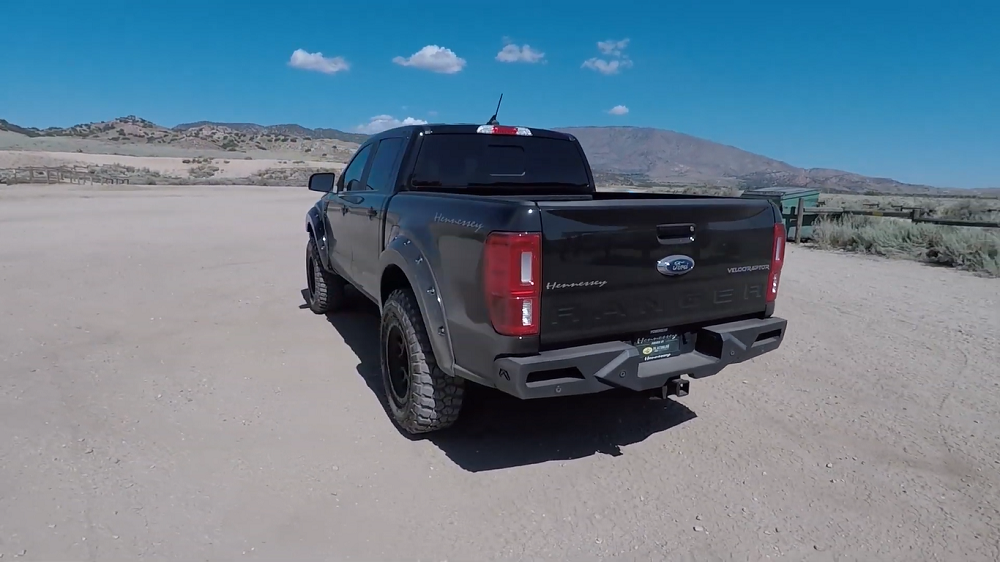
But the VelociRaptor doesn’t do everything perfectly. Most of Farah’s criticism focuses on the Ranger’s stock equipment, such as its transmission. With 10 gears, it’s always in a new one. Manually controlling it is possible, but not as easy and quick as it is in an F-150 Raptor because there are no giant paddle shifters behind the steering wheel to pull back on. Despite its exhaust upgrade, the EcoBoost four doesn’t make the most pleasant sound. HPE’s choice of tires irks Farah, too. He finds them noisy and inferior to BFGoodrich K02 all-terrain rubber.
The VelociRaptor is not a perfect vehicle by any means (no vehicle is), but it is an ultimate version of the Ranger, which Ford refuses to offer here. The big question is: Would you rather have a VelociRaptor or a nicely equipped F-150 Raptor?
